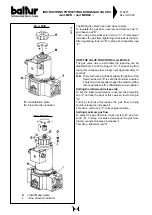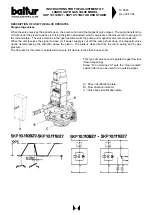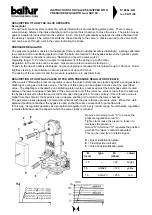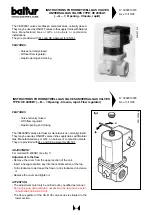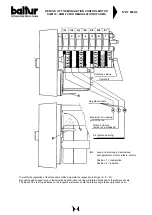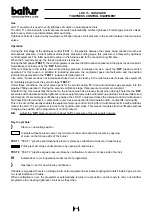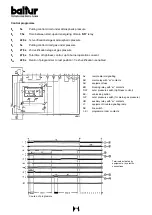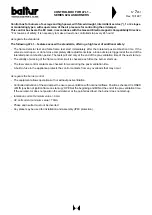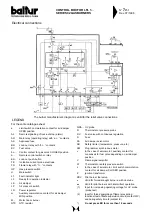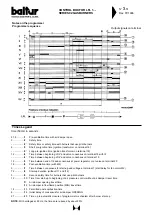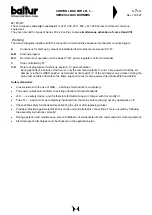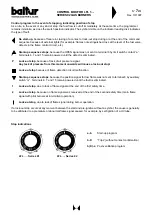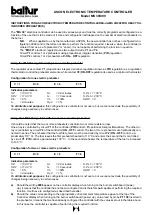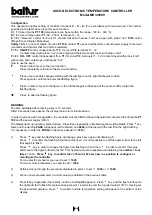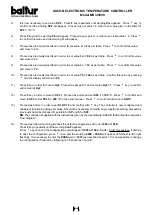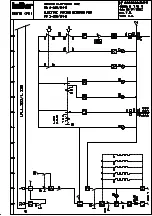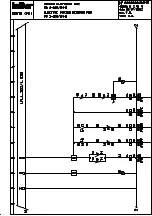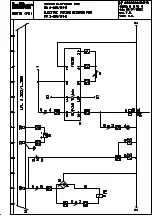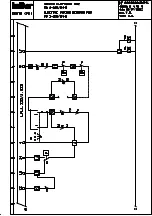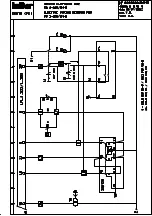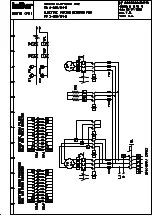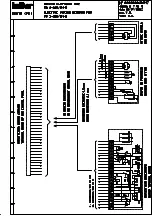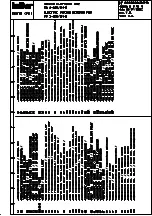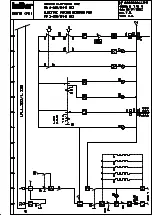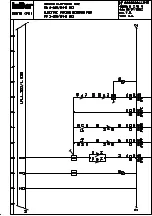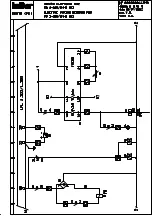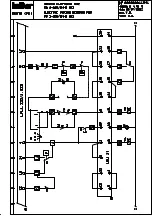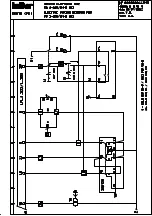
42
INSTRUCTIONS FOR ASCON ELECTRONIC TEMPERATURE CONTROLLER Model MS 30/099 FOR HEAVY OIL
IN BURNER PREHEATER(S)
The “MS 30” electronic controller cab be used in various ways and must be correctly programmed (configured) as a
function of the use that is to be made of it. Use and configuration will depend on the number of electric preheaters on
the burner.
N.B.
When supplied to us by the manufacturer ASCON, the new controller has not been configured (con-
figuration 9999) and is therefore not able to perform the function required. Likewise, when the controller is
ordered from us as a “replacement” or “spare”, it is not capable of performing the function in question.
The “MS 30” electronic regulator uses two output circuits, Y1 and Y2.
Circuit Y1 controls 1 or 2 preheaters using proportional, integral, derivative (PID) regulation.
Circuit Y2 controls 1 or 2 preheaters with ON – OFF regulation.
Using the “MS 30” regulator with just one electric preheater
The regulator uses contact Y1 (proportional, integral, derivative regulation known as PID regulation) as a regulation
thermostat to control the preheater elements, while contact Y2 (ON-OFF regulation) is used as a minimum thermostat.
Configuration for one electric preheater
C = 1
D = 0
E = 4
F = 5
Indicative parameters
SP
= 130.0 °C
t.d.
= 0.8 minutes
S.P.L.1 = 100 °C
SP.2
= 110.0 °C
t.c.
= 10 seconds
S.P.L.h. = 250 °C
P.b.
= 6 %
Yh
= 100%
SLOP = 0
t.i.
= 4 minutes
Hy.2
= 1%
To all intents and purposes, this configuration is suitable for most users, but we cannot exclude the possibility of
changes being necessary in certain cases.
.
Using the “MS 30” regulator with two or more electric preheaters
It should be noted that the two or more preheaters constitute two or more resistor arrays.
One array is controlled by circuit Y1 of the controller (PID control = Proportional, Integral, Derivative). The other ar-
ray is controlled by circuit Y2 of the controller (ON - OFF control).The two or more preheaters are hydraulically con-
nected in series. The preheater that the fuel first enters must be controlled by circuit Y2 (ON - OFF control, ap-
proximately 110 °C). The fuel leaves the first preheater heated to 110 °C and enters the second that is controlled
by circuit Y1 (PID control, approximately 130 °C). In the second preheater, the temperature of the fuel is increased
to 130 °C.
Configuration for two or more electric preheaters
C = 1
D = 0
E = 4
F = 6
Indicative parameters
SP
= 130.0 °C
t.d.
= 0.8 minutes
S.P.L.1 = 100 °C
SP.2
= 110.0 °C
t.c.
= 10 seconds
S.P.L.h. = 250 °C
P.b.
= 6 %
Yh
= 100%
SLOP = 0
t.i.
= 4 minutes
Hy.2
= 1%
To all intents and purposes, this configuration is suitable for most users, but we cannot exclude the possibility of
changes being necessary in certain cases.
a)
Should the writing 9999 appear on the controller display when turning on the burner switchboard (power
up), it means that the controller has not been configured and is therefore not capable of performing the required
function. It will have to configured as described hereafter.
b)
Should the value corresponding to the approximate current ambient temperature appear at the top of the
Controller display when turning on the burner switchboard (power up), value read by probe PT 100 inserted in
the preheater, it means that we have already configured the controller with the values set out in the table above.
In this case the controller is capable of performing the required function.
ASCON ELECTRONIC TEMPERATURE CONTROLLER
Model MS 30/099
Summary of Contents for TS 0 GN
Page 2: ......
Page 47: ......
Page 48: ......
Page 49: ......
Page 50: ......
Page 51: ......
Page 52: ......
Page 53: ......
Page 54: ......
Page 55: ......
Page 56: ......
Page 57: ......
Page 58: ......
Page 59: ......
Page 60: ......
Page 61: ......
Page 62: ......
Page 63: ......
Page 64: ......
Page 65: ......
Page 66: ......
Page 67: ......
Page 68: ......
Page 69: ......
Page 70: ......
Page 71: ......
Page 72: ......
Page 73: ......
Page 74: ......
Page 75: ......
Page 76: ......
Page 77: ......
Page 78: ......
Page 79: ......
Page 80: ......
Page 81: ......
Page 82: ......
Page 83: ......
Page 84: ......
Page 85: ......
Page 86: ......
Page 87: ......
Page 88: ......
Page 89: ......
Page 90: ......
Page 91: ......
Page 92: ......
Page 93: ......
Page 94: ......
Page 95: ......



